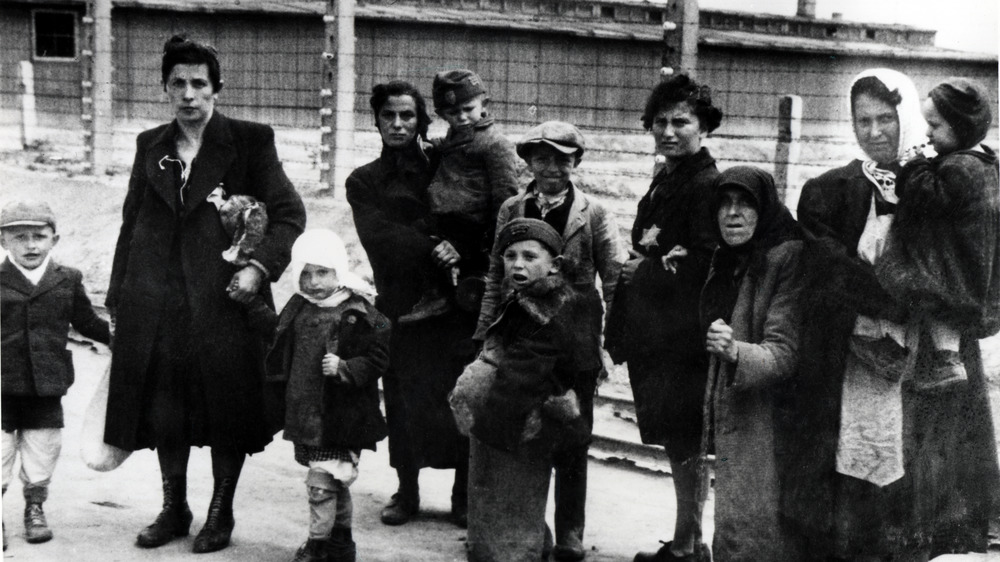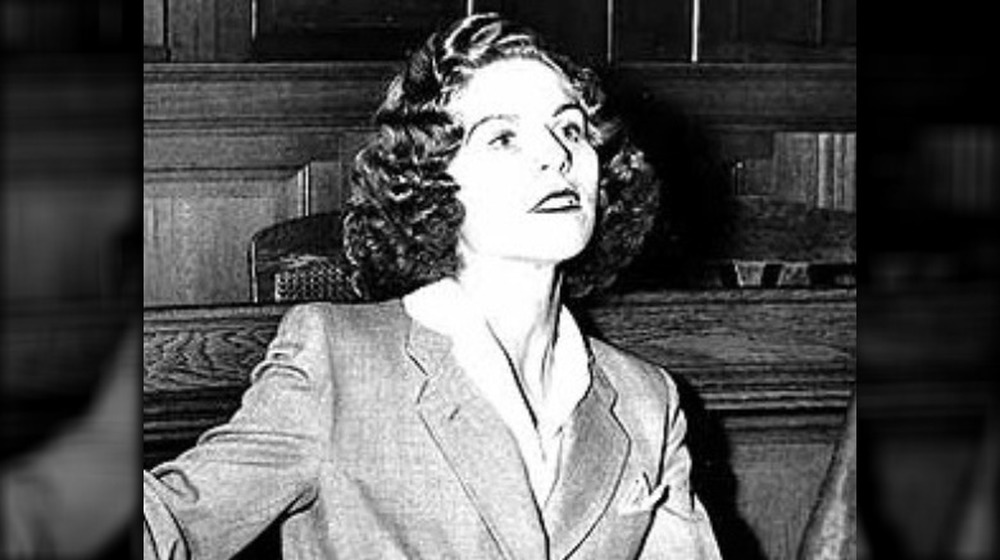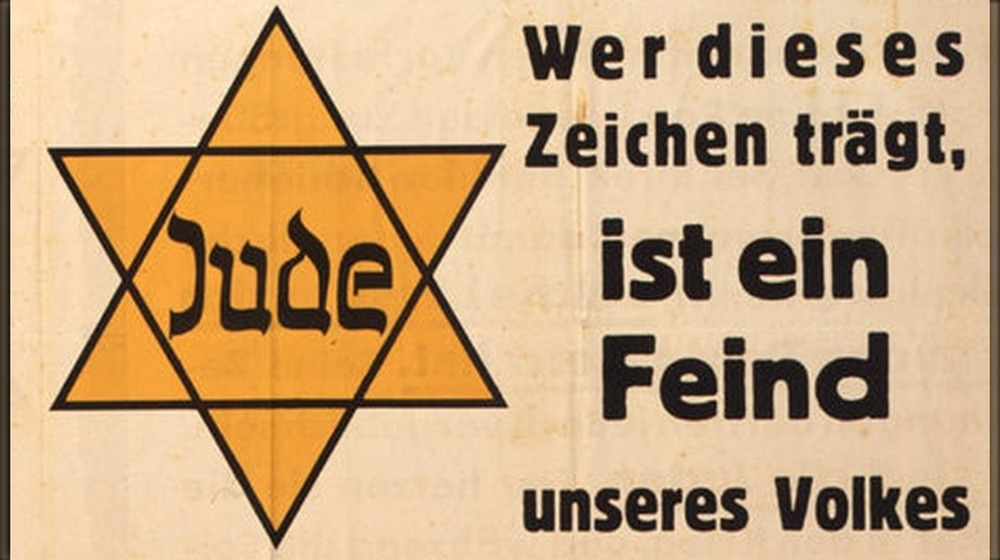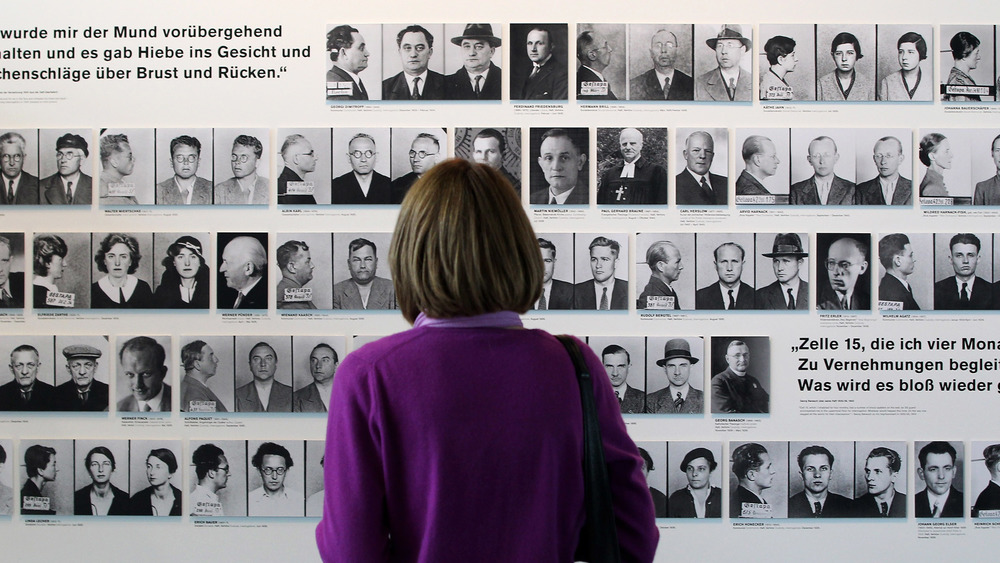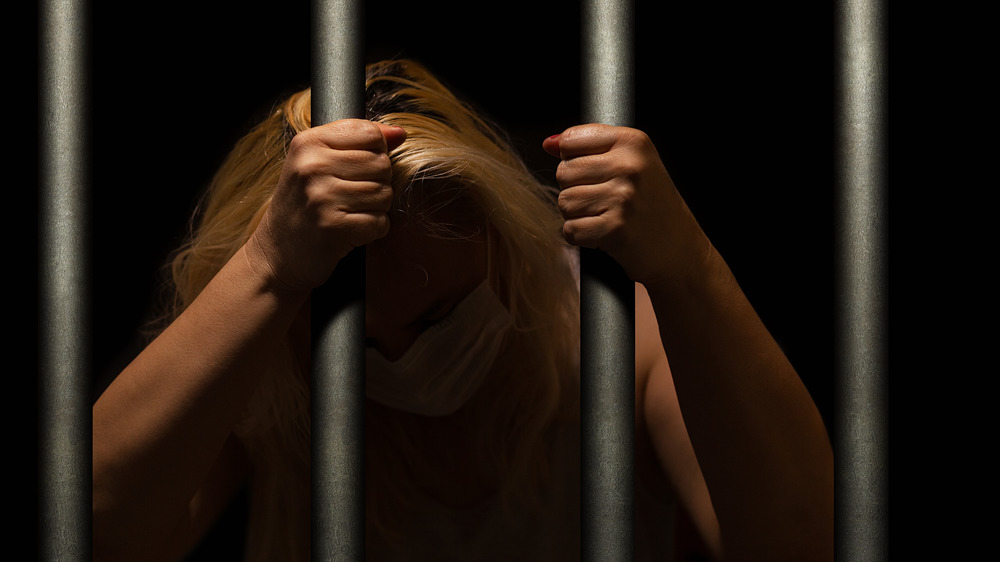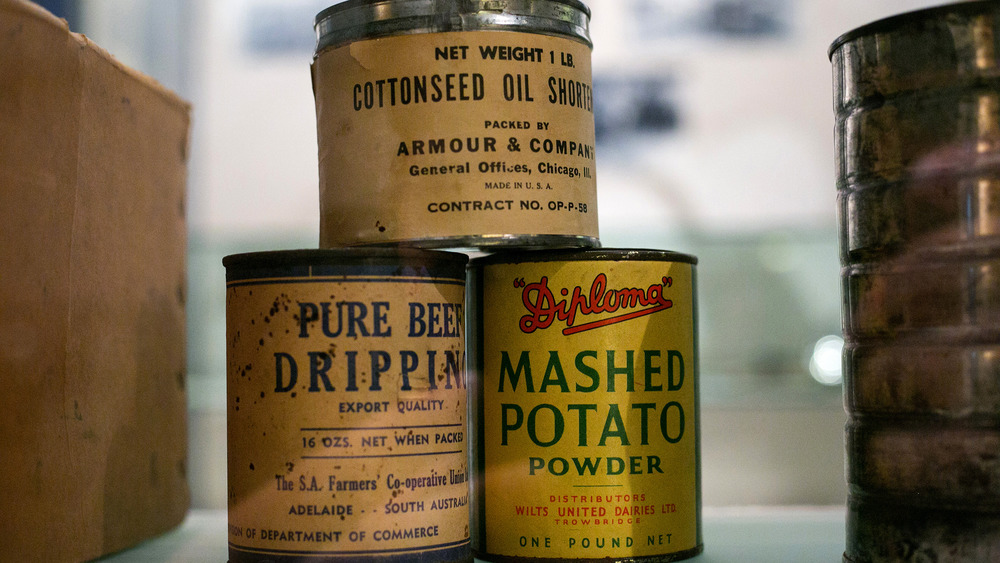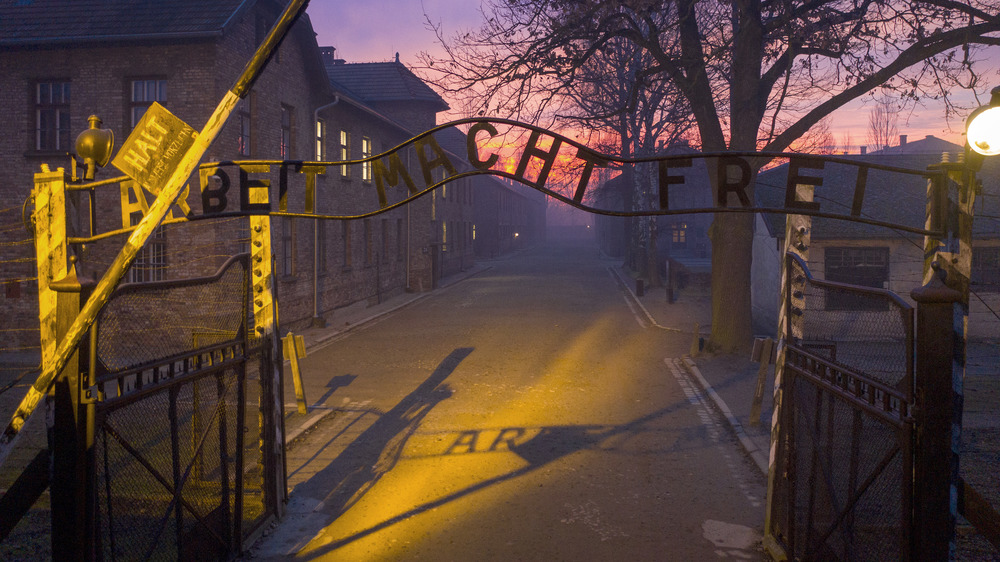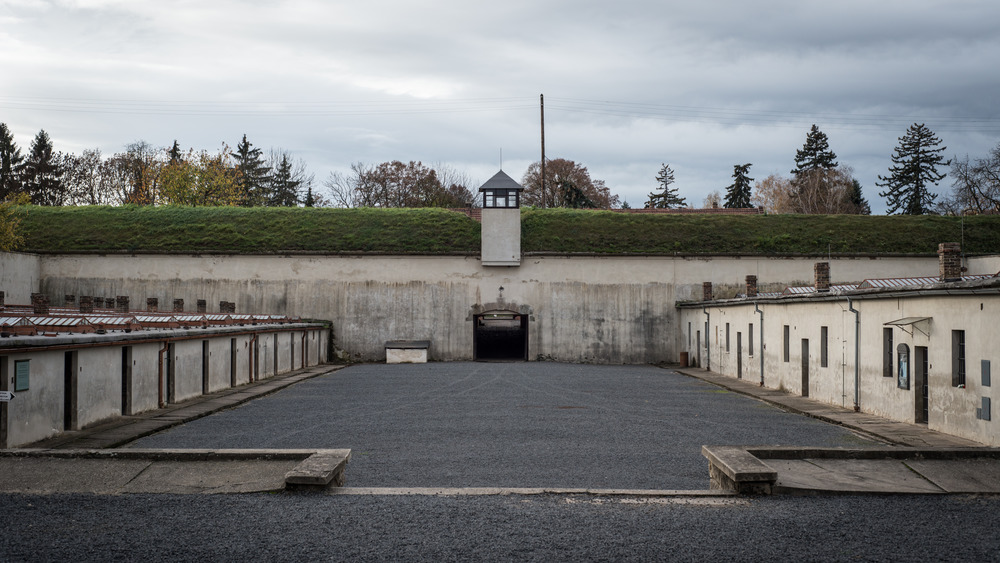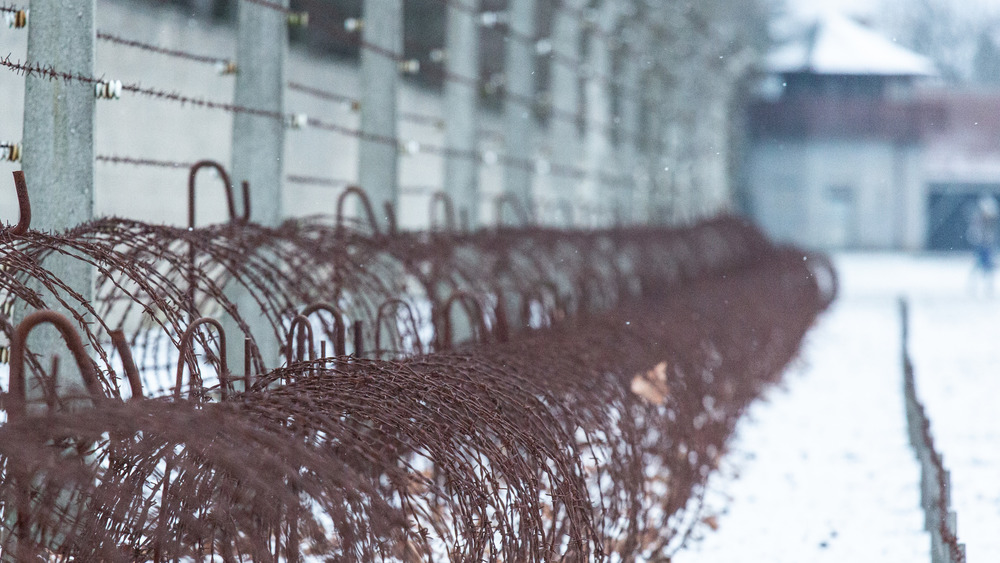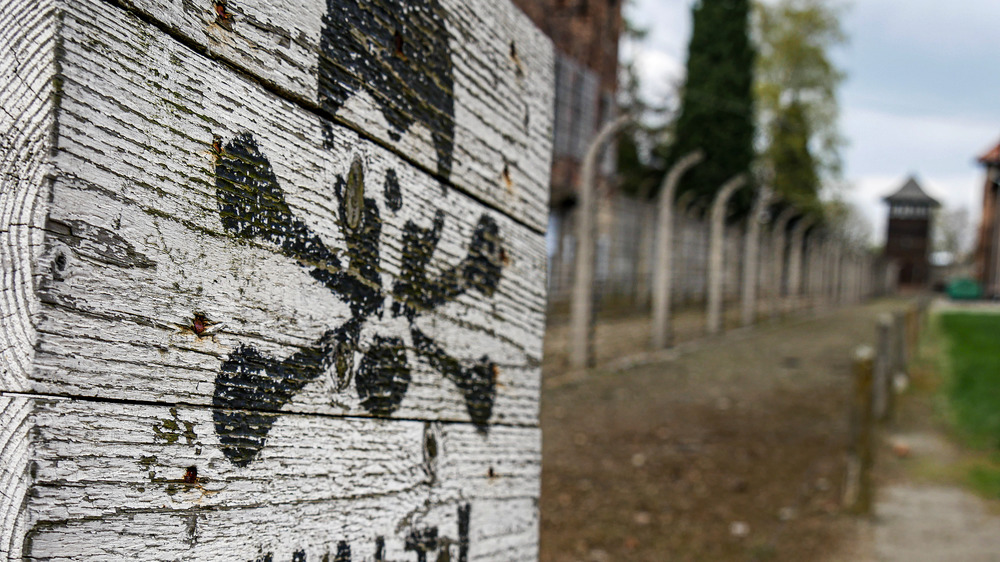The True Story Of The Woman Who Betrayed Fellow Jews During WW2
World War II wasn't just a time of widespread horror, violence, and despair, it was also a time where families were often faced with heartbreaking choices. That was, perhaps, most famously portrayed in the film Sophie's Choice, a movie that tells the story of a Polish woman who is forced to choose which of her two children will be sent to the gas chamber, and which will be given a chance to survive in Auschwitz's labor camps. (The film is, incidentally, produced by Branko Lustig, an Auschwitz survivor.)
Circumstances sometimes force people into terrible choices... and they sometimes force people to do awful, unthinkable things. And that's where the story of Stella Goldschlag begins. Born in Berlin in 1922, the blond, beautiful, and Jewish Goldschlag was a vibrant young woman when her country began to move closer and closer to war. The writing was on the wall, as it were, and it rather quickly became clear to Goldschlag that neither she nor her family were safe.
What happened next was proof that there are two sides to every story and that sometimes, it's not so easy to tell the difference between good and evil. Stella Goldschlag would become infamous for betraying her fellow Jews to the Nazis and condemning hundreds to death, but it's not as straightforward as that.
An upbringing on the brink of war
Gerhard and Toni Goldschlag welcomed their daughter Stella on July 10, 1922. Gerhard — a World War I veteran and former soldier in the German Imperial Army — was a musician devoted to German music... but, because of his Jewish ancestry, was employed as a composer by the Kulturbund — a guild of Jewish artisans. According to Aviva-Berlin, both Toni and Gerhard were singularly devoted to their only child: they loved her dearly, gave her everything they had, and taught her what it was to be adored.
But this was Germany, and the Goldschlags were still Jewish. According to Traces of War, Stella was removed from public school when she was young and was sent to a private, Jewish school in the suburbs... where she quickly learned all about the power of a wink and a smile. But war was looming.
By the time of Kristallnacht — the infamous Night of Broken Glass — the Goldschlag family had seen the writing on the wall. After briefly going into hiding, Gerhard decided it was time for them all to leave. Unfortunately, they had waited too long. Gerhard was out of work, finances were non-existent, and they were unable to secure passage out of Germany. When Stella's school offered her the chance to head to Britain on a school trip (and then stay there), her parents said no. They weren't separating the family, so they had no choice but to stay in a country that was getting increasingly dangerous.
The early years of World War II
At first, Traces of War says that Stella Goldschlag enjoyed a certain amount of freedom, mostly thanks to her blue eyes, blonde hair, and her ability to pass as Aryan. She went to college, studied fashion, and fell in with a jazz band as a singer. It was there that she met and married her first husband, Manfred Kubler.
Her luck didn't last long, though. By 1941, she — like other German Jews — was now being forced to wear the Star of David that clearly labeled her as Jewish. For the next few years, she wore the star when she needed to, and at other times, shed the star and relied on her appearance to keep out of the hands of Nazi officers who regularly headed out to round up Jewish workers. She spent time working in factories for Siemens, and manufacturing ammunition: each time Nazis came to arrest Jewish workers, she and her mother — also blonde-haired and blue-eyed — avoided arrest.
Her husband wasn't as fortunate. According to Geni, he was arrested and deported to Auschwitz on May 3, 1943. He died there just two days later, just 20-years-old.
The U-boats and the catchers
While it might seem brazen that Stella Goldschlag and her mother continued to work in Nazi factories while trying to avoid arrest and deportation to the concentration camps, it's worth a quick aside to say that they weren't the only ones who tried to survive the war by hiding right out in the open.
The JC says that before Hitler's purge, there were around 180,000 Jews in Berlin. By 1943, there were around 7,000 who had managed to hold onto their freedom, and in the slang terms of the time, they were called "U-boats," as they were hiding just under the surface. They used a wide range of techniques to survive, from adopting new, false identities to becoming housekeepers and servants for families that agreed to protect them. The Jerusalem Post says it was a life of constant fear and hardship: Nazis were on the lookout for forged papers and anyone who was hiding... and they were employing greifers.
Greifers were other Jews, working for the Gestapo to infiltrate Berlin's network of Jews trying to pass under the radar, as it were. In exchange for their own immunity, they would agree to locate and identify Jews living in Berlin, and help the Gestapo arrest them. The practice was so widespread that those Jews who were hiding their identities were careful to not even trust other Jews... lest they be on the Gestapo payroll.
Stella Goldschlag falls into Nazi hands
Gunther Rogoff had a talent that was in high demand: he was an excellent forger, and was the source of a huge number of falsified documents, forged paperwork, and fake passports. Life might not have been good, but it was livable: until, Spiegel says, he forged an identification card for Stella Goldschlag.
At around the same time Rogoff was kicking off his career as a forger, Goldschlag moved in with a man named Rolf Isaaksohn, and he was the sort of person who his own mother described as one who "walks over corpses if he has to." Isaaksohn, too, was a forger, and the pair tended to frequent a local cafe. It was there, on July 2, 1943, that they ran into her old friend Inge Lustig.
Lustig was a greifer, and immediately signaled to the Gestapo. Goldschlag was arrested, taken to the local Gestapo headquarters, and locked up in solitary confinement in a cell already flooded with water. It was any time — day or night — that her cell door might open and she might be removed for interrogations in the cellar, and questioning included a repeatedly broken tailbone, mock strangulations, and the threat of execution. She would later write, "Completely smashed and destroyed, I lay there. Then they kicked me in high boots... I gave up my life."
They knew Rogoff had forged her paperwork, and they wanted to know where to find him.
Convincing a Jew to spy for the Gestapo
Stella Goldschlag didn't know how to find Rogoff, so she was transferred to a local women's prison. Once there, she asked to go to the dentist, and was taken — where she promptly escaped.
The instincts that took over weren't necessarily best for self-preservation, and after fleeing to where here parents had been hiding, she — and the rest of her family — were arrested less than 12 hours after she complained about her toothache. According to Spiegel, that's when the prison she was transferred to was bombed, and she escaped yet again. Unable to find her family in the chaos, she returned to Gestapo custody — and her parents.
And that's when the deal was made. According to Exberliner, there's a lot of different theories out there. It's been suggested that she was suffering from PSTD, or Stockholm Syndrome. Traces of War says that it was purely out of concern for her parents — and an inability to function without them — that she returned. Realizing that they had a potentially valuable asset on their hands, the Gestapo promised her that if she started to work for them to hunt down and turn in the Jews hiding in Berlin — including the forger Gunther Rogoff — her parents' deportation to Auschwitz would be delayed. Her help was the only thing that would keep them safe, she was told — so she agreed.
The true meaning of family
Even as Stella Goldschlag was going through her arrests, torture, and imprisonment, Rolf Isaaksohn was also arrested. He was taken into Gestapo custody in October of that same year, and he, too, agreed to become a greifer.
Spiegel says that for him, it was less about his family's safety and more about his own. On that fateful day Stella Goldschlag was arrested, she and Isaaksohn had also been in the company of Dorothea, his cousin. She was 10-years-old at the time, but never forgot how the first person that Isaaksohn turned in to the Gestapo was her father.
That was on November 19, just weeks after his arrest. Dorothea would later remember: "He killed my father to prove to the Gestapo how good he was," and that's some seriously dark stuff. He did get the result he so desired, though: after Goldschlag also took the deal, they were reunited under the watchful eye of SS-Hauptscharfuhrer Walter Dobberke, the man who made the deal and dispatched them to hunt.
For the promise of food
Spiegel says that Stella Goldschlag was pretty much exactly what the Gestapo had wanted: she was beautiful and charming, she could talk information out of anyone, particularly men she blinded with her feminine wiles... and that was just for starters. She was also clever enough to survive on her own, and so desperate to save her parents that she would do almost anything... and she did.
Dobberke divided Berlin into districts, and gave entire sections to Goldschlag and Isaaksohn as hunting grounds. From there, it was up to her: And for starters, Exberliner says that she simply made contact with Jews hiding in her districts, and determined what she could offer that would get them to trust her. For some, it was the promise of a way out of the city. For others, it was food. She would then arrange to meet them somewhere "safe," which is where the Gestapo would be waiting to take them into custody.
She was also a frequent sight at funerals, particularly when the deceased was the non-Jewish half of a mixed marriage. At the death of their partner, the Jewish spouse lost any and all rights and protections that their marriage allowed them, and Goldschlag was very, very good at arranging arrests as the grieving widow or widower was leaving the cemetery. No one was off-limits, and as the popular girl in her social circles growing up, there were a lot of old friends for her to arrest.
The girl who became known as 'blonde poison'
Stella Goldschlag earned a few nicknames during her time as a greifer, and none were flattering. According to the Chicago Tribune, she was called "the blonde poison," "the blonde ghost," or even, says Traces of War, "the blonde venom" and "the blonde witch." Much, much later, a former classmate of hers named Peter Wyden wrote a book about her: it was partially about the innocent girl he remembered, and the person she had become — and it was a person he described as "a cannibal who consumed her own."
Those consumed included people like Edith Ziegler, who had been one of Goldschlag's many old friends. Ziegler's fate had come with blinding speed: Spiegel says she'd been leaving a subway station when Goldschlag descended on her, talking about the Gestapo, and telling her they needed to leave. Ziegler trusted her old friend, and died in Auschwitz (via Spiegel).
It's unclear how many people Goldschlag handed over to the Gestapo, but she was by far one of the most successful. According to The Irish Times, her victims number at least 300, while some sources say she was responsible for the arrest and deportation of as many as 2,000 people.
In the end, Stella Goldschlag couldn't save her parents
If Stella Goldschlag had decided to sacrifice countless people for her parents, she failed.
She had been working for the Gestapo for just around six months when, Spiegel says, SS-Hauptscharfuhrer Walter Dobberke told her that her work for them was no longer enough to keep her parents safe, but he'd claimed he had made sure life would be at least tolerable for them. Instead of Auschwitz, they would be sent to Theresienstadt (pictured). According to the US Holocaust Memorial Museum, Theresienstadt was a transit camp, where people were sent as a sort of stopover on their way to their final destination. While the Goldschlags firmly believed they were going there to be used as workers in the Nazi war machine, the ultimate truth was much different.
The Goldschlags arrived in Theresienstadt on February 23, 1944, and on October 1 of the same year, Gerhard arrived at the next stop in the journey: Auschwitz. Toni Goldschlag left Theresienstadt on the same day as her husband but on a different transport, and she was also taken to Auschwitz. According to Aviva-Berlin, they both died there.
Stella Goldschlag and the end of the war
After her parents were deported, Aviva-Berlin says that Stella Goldschlag's mindset turned from one of desperation to depression. In addition to her parents' deportation, her relationship with Isaaksohn spiraled out of control. Both started affairs with others, and she fell in with a man named Heino Meissl. By this time, the Soviet Army was knocking on Berlin's door, and she was hoping that when she was inevitably arrested for collaboration, Meissl would speak up on her behalf.
Isaaksohn's attempts to flee ahead of the advancing Allied army failed, and he was officially declared dead by the Soviets. Goldschlag, meanwhile, went into hiding in a Berlin suburb and gave birth to a daughter, Yvonne Meissl. Traces of War says she was just weeks old when Goldschlag was arrested.
Initially claiming to be a victim of Nazi persecution, she was soon taken back to Berlin. There, Jewish survivors identified her — and told stories of her collaboration — which led to a series of trials. The first Soviet tribunal sentenced her to 10 years of hard labor, and ironically, she was first imprisoned in the ex-concentration camp of Sachsenhausen (pictured). What followed were transfers throughout the Soviet prison system and — in 1957 — another trial in Berlin, where she was diagnosed with schizophrenia. She was found guilty and sentenced to more time in jail but wasn't sent back in light of her time served.
The controversy of Stella Goldschlag
No one can ever really know the mind of another person, and here's where the story of Stella Goldschlag gets even more controversial. When she was put on trial in Germany in 1957, she originally played the victim card — and it kind of worked. At first, Traces of War says that popular — and jury — opinion was in her favor. She'd been trying to save the lives of her parents, after all, and that was something people could sympathize with. But when it got out that she kept working for the Gestapo even after they were deported, well, that was a little more difficult to justify.
That's when Goldschlag condemned the entire thing as a Jewish conspiracy working against her. Why? She was gorgeous, and they were jealous. According to The New York Times, that was about when it was decided that Goldschlag had done what she did not out of devotion to her parents — not entirely, at least — but in order to save herself. And that, says The Irish Times, is when she converted to Christianity and became widely known not only as a betrayer, but as a raging antisemite.
Goldschlag tried to recover custody of her daughter, but by that time, she was a grown woman — who refused to have anything to do with her mother. Stella Goldschlag remarried several more times, and in 1994, she died after jumping from the balcony of her apartment.
Stella Goldschlag wasn't the only one
While Stella Goldschlag and her fellow greifers were hunting Jews in Berlin, they weren't the only Jewish people who were turning their fellow Jews over to the Nazis. There were also those like Vital Hasson, a Greek Jew who became obsessed with Nazi propaganda. According to Sarah Abrevaya Stein of the University of California (via The Conversation), Hasson became the head of the Jewish police of Salonica in 1941, under some super shady circumstances. Dizzy with power, he declared himself a bounty hunter, and started hunting.
Once men, women, and children found themselves contained in the city's Jewish ghettos, his crimes were even more unspeakable. By 1943, the 48,533 people of the ghetto were rounded up and sent elsewhere: Auschwitz.
Justice did catch up to him. Even though he tried to flee, he was captured by the British and put on trial. He earned a little bit of notoriety in the verdict: he became the only Jew in Europe executed for collaboration with the Nazis.
